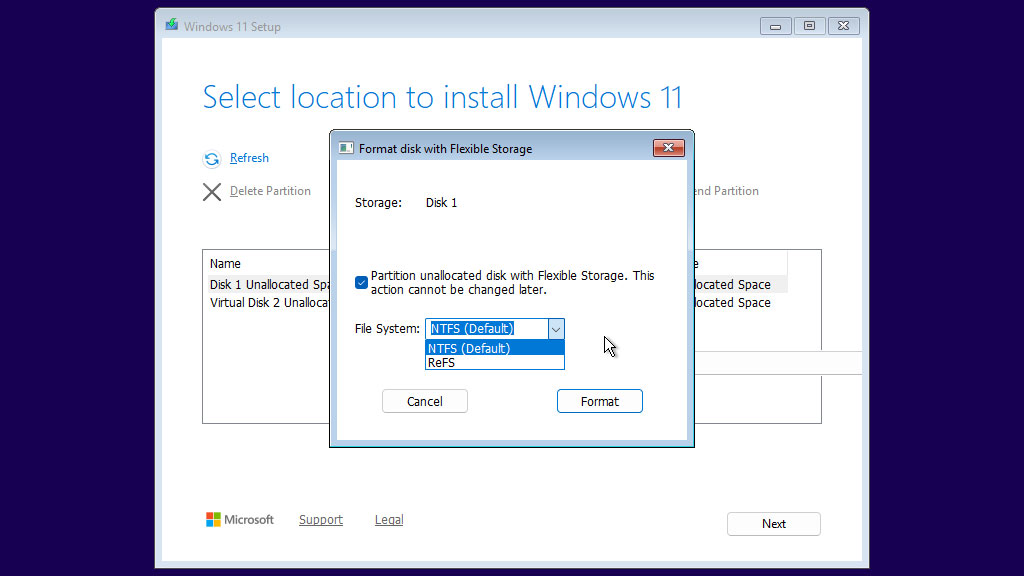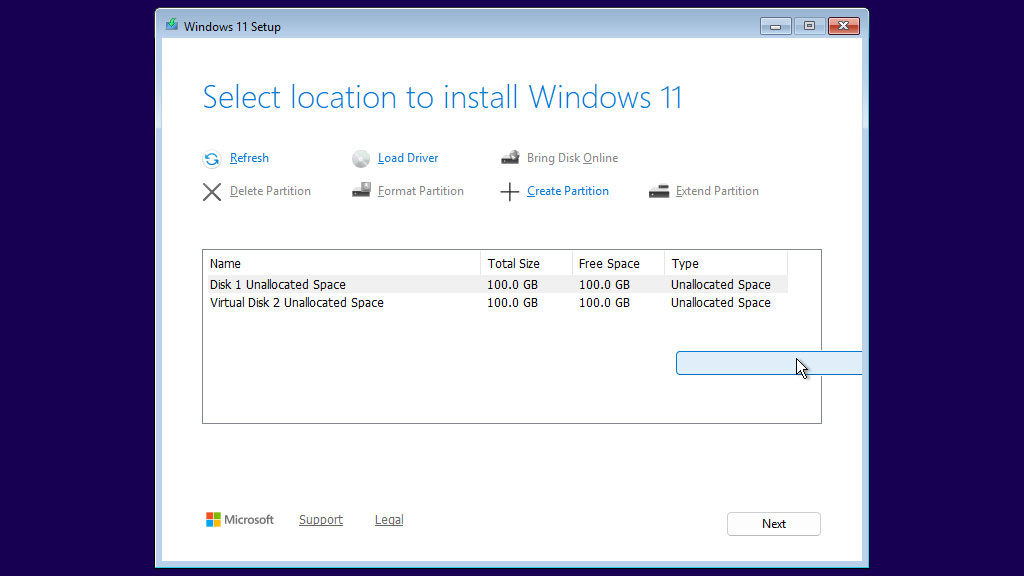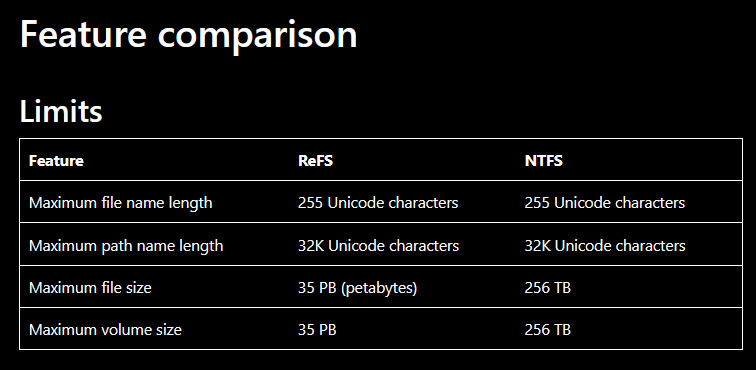
The newest insider builds of Windows 11 are allowing users to create and clean install onto freshly formatted NTFS (Default) or ReFS partitions. Windows Insider sleuth PhantomOfEarth highlighted this new option, which seems to have come along with Build 27823. The arrival of ReFS, which stands for Resilient File System, should be beneficial in several ways, as it can unlock faster performance, improve data integrity, and boost partition handling up to 35 petabytes. However, it has some drawbacks compared to the old established NTFS, and currently can't be used for bootable or removable media, for example.
Build 27823 adds a menu for formatting/partitioning unallocated disks with Flexible Storage to Windows Setup pic.twitter.com/apoCikWpwtMarch 26, 2025
In the tweet embedded above, you can see the new dialog option available during a fresh install of Windows 11 Build 27823 (Canary). Another image shared by PhantomOfEarth reinforces feelings that this dialog is somewhat premature. It shows how to summon the 'Format disk with Flexible Storage' dialog via an invisible/empty button, which sits askew of the 'Windows 11 Setup > Select location to install Windows 11' pane.


This isn't the instance of ReFS features coming from the professional server to the consumer version of Windows 11. Last October, we noticed ReFS Block Cloning was on its way to Windows 11 users to boost file copy speeds. Now it looks like a broader gamut of ReFS advances could come to everyday Windows 11 users.
ReFS Recap
Microsoft asserts that its newest file system is "designed to maximize data availability, scale efficiently to large data sets across diverse workloads, and provide data integrity with resiliency to corruption." In addition to resiliency, it reportedly improves performance and scalability. In terms of scalability, we see that ReFS supports files and volumes as large as 35 petabytes, whereas NTFS maxes out at 256 terabytes.

Microsoft's official ReFS overview page discusses the file system's key benefits and underlying technologies. Designed to replace the creaking NTFS, which was introduced way back in 1993, ReFS is said to be more reliable thanks to the use of checksums for metadata, storage space integration, corrupt data handling, and proactive error correction. ReFS is also interesting in the way it uses Storage Spaces, placing more frequently accessed data on faster media, and its use of Sparse File Support for efficiency.

However, there are some drawbacks to ReFS at this time. A table shared in Microsoft's learning resource highlights that ReFS can't be used for bootable disks, and it doesn't support other NTFS features we take for granted, like file system compression, removable media, or disk quotas. Microsoft says that these features aren't available "at this time," which hints that it is working on adding them.







